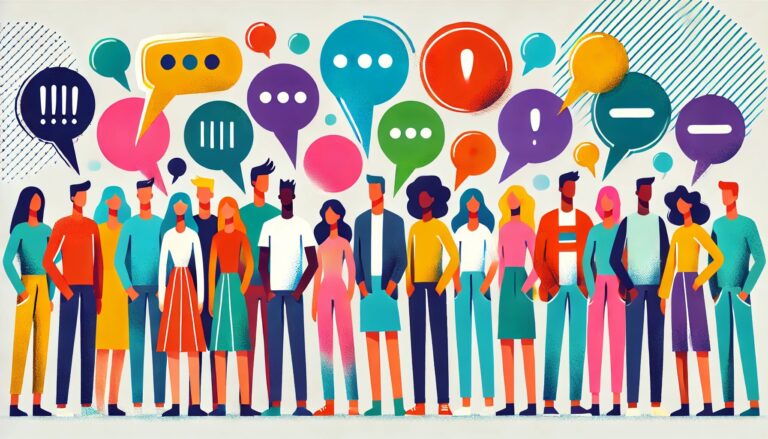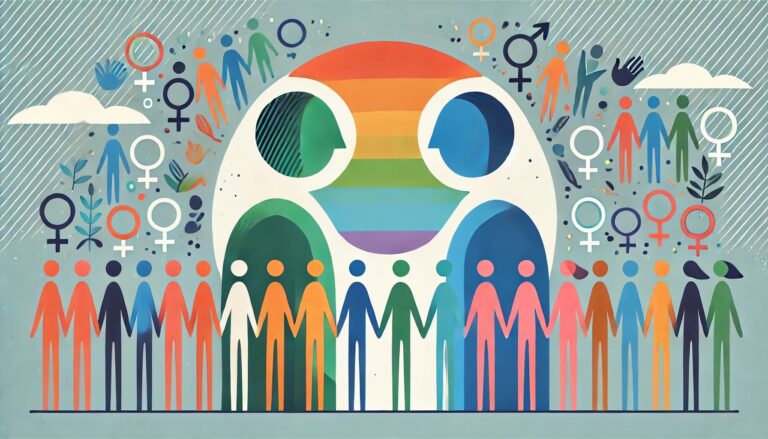
100+ Diversity And Inclusion Statistics You Must Know In 2025
Diversity and inclusion have taken center stage for businesses of all sizes in recent years, evolving from a corporate buzzword to a critical driver of growth and impact. Beyond boosting financial performance and expanding reach, fostering diversity is about building a strong company culture, attracting top talent, and contributing to a more equitable society. By embracing inclusive language and challenging outdated norms in both communication and actions, organizations can connect with diverse audiences, reflect their values, and lead with purpose.
To underscore the importance of diversity and inclusion, we’ve compiled a comprehensive list of statistics that highlight its transformative power. Even small shifts in language and approach can create meaningful change, promoting clarity, equality, and a sense of belonging for all.
100+ Diversity And Inclusion In The Workplace Statistics
The Diversity of Millennials and Gen Z
- 56% of millennials are white, compared to 72% of baby boomers (CNN Money).
- The white working population declined from 83% to 63% (1980–2020).
- Minority worker representation doubled during this period (1980–2020).
Why Job Seekers Prioritize Workplace Diversity
- 67% of job seekers value workplace diversity (Glassdoor).
- 50% of employees want greater focus on diversity initiatives.
- 79% of candidates use social media to assess DEI efforts.
Workplace Discrimination and Harassment
- 45% of American workers experience workplace discrimination or harassment (Gallup).
- 55% of employees say their workplace has a D&I policy, yet many still feel unsafe.

Women in Decision-Making
- Only 40% of women are satisfied with workplace decision-making, compared to 70% of men (Culture Amp).
- 2/3 of women feel comfortable voicing dissenting opinions.
- 60% believe gender-diverse companies are more successful.
Lack of Diversity in Leadership
- 78% of employees work in companies lacking diverse leadership (Harvard Business Review).
- Women are 20% less likely than white men to get endorsements for ideas.
- People of color are 24% less likely; LGBTQ+ employees are 21% less likely to receive endorsement.
Representation of Women
- Companies with more women in C-suite roles see 34% higher returns for shareholders (Fast Company).
- Women lead only 5% of Fortune 1000 companies but contribute 7% of total revenue on the list.
Gender Diversity and Employee Engagement
- Companies with above-average gender diversity and engagement outperform others by 46% to 58% (Fast Company).
Higher Innovation Revenues
- Diverse companies generate 19% more innovation revenue (Harvard Business Review).
- Industry, nationality, and gender diversity have the strongest impact on innovation.
Racially Diverse Teams Perform Better
- Companies with higher racial/ethnic diversity are 35% more likely to outperform competitors (McKinsey).
Two-Dimensional Diversity
- Companies with “2-D diversity” capture markets 45% better and are 70% more likely to enter new markets (Harvard Business Review).

Lack of Time for Diversity Initiatives
- 41% of managers claim they are “too busy” to focus on diversity efforts (Builtin.com).
Employee Expectations
- 57% of employees want companies to prioritize diversity and inclusion (Builtin.com).
Perceived Double Standards
- 40% believe companies show bias in hiring women candidates (Pew Research).
Underrepresentation in Tech
- Only 4.8% of Google’s tech workforce is African American (Web Archive).
Bias in Callbacks
- Caucasians receive 50% more callbacks than African Americans (EBIINC).
General Views on DEI
- 56% of US workers say focusing on DEI is a good thing (Pew Research Center).
- 54% believe their company pays the right amount of attention to DEI, but 14% feel it’s “too much” (Pew Research Center).
Racial and Gender Differences
- 78% of Black workers and 61% of women support DEI, compared to 47% of White workers and 50% of men (Pew Research Center).
- Two-thirds or more of Black (78%), Asian (72%), and Hispanic (65%) workers support DEI, compared to 47% of White workers (Pew Research Center).
Generational and Educational Trends
- Workers under 30 are the most likely age group to support DEI (Pew Research Center).
- 68% of workers with a postgraduate degree support DEI, compared to 59% with a bachelor’s degree and 50% with less education (Pew Research Center).
Impact on Job Offers
- 72% of workers aged 18–34 would turn down a job if the manager didn’t support DEI (Glassdoor).
- 65% of workers aged 18–34 would decline a job due to a lack of diversity in leadership (Glassdoor).
- 74% of US workers say corporate DEI investment is “very important” or “somewhat important” in job decisions (Glassdoor).
- 80% of employees want to work for companies that value DEI (LinkedIn).
Perceptions of Success
- About 50% of Black (52%) and Asian (51%) workers believe being White makes it easier to succeed at work (Pew Research Center).
- For every 100 men promoted to manager, only 58 Black women are promoted (Lean In).
- For every 100 men hired as managers, only 64 Black women are hired (Lean In).

Unique Experiences
- 54% of Black women often feel they are the only Black person in the room (Lean In).
- Asian women are 7x more likely than White employees to be mistaken for someone of the same race (Lean In).
Motivations and Allyship
- 52% of Black women are motivated by opportunities to influence workplace culture, compared to 46% of White women, 44% of Latinas, and 41% of Asian women (Lean In).
- 49% of Black women are motivated to be role models, compared to 43% of Latinas, 42% of White women, and 37% of Asian women (Lean In).
- Only 26% of Black women report strong allies at work, compared to 81% of White women and 82% of White men (Lean In).
Diversity in Leadership
- As of June 2023, only 9 Black CEOs lead Fortune 500 companies (Fortune 500).
- 65% of workers aged 18–34 would leave a company lacking diversity in leadership (Glassdoor).
Consumer Expectations
- 61% of consumers agree that authentic, diverse representation in media can improve society (Mintel).
Perceptions of Success
- 36% of workers say being a man makes it easier to succeed at work; only 6% say it makes it harder (Pew Research Center).
- 34% of women believe being a woman makes it harder to succeed, while 44% say being a man makes it easier (Pew Research Center).
Earnings Disparities
- Women earn 82 cents for every dollar earned by men, despite being more likely to hold a bachelor’s degree (48% vs. 41%) (Pew Research).
- Black women earn 59% of what men earn, and Hispanic women earn 52% (Pew Research).
- Over a 40-year career, women lose an average of $398,160 due to the pay gap (Lean In).
Economic Impact
- Closing the gender pay gap could halve the poverty rate and inject $500 billion into the US economy (Lean In).
Women in Leadership Representation
- Women hold 1 in 4 C-suite roles; women of color hold just 1 in 16 (Lean In).
- For every 100 men promoted from entry-level to manager, only 87 women are promoted (Lean In).
- Only 4 Fortune 500 companies are led by openly LGBTQ CEOs as of 2023 (Fortune 500).
- 90% of women under 30 want to be promoted; 75% aspire to senior leadership roles (Lean In).
Workplace Obstacles
- 58% of Americans believe women must do more to prove themselves for top leadership roles (Pew Research Center).
- Other challenges include:
- Gender discrimination (50%)
- Family responsibilities (48%)
- Bias against women in leadership (43%)
- Sexual harassment (40%)
Microaggressions
- Women experiencing microaggressions are 4x more likely to feel burned out and 3x more likely to consider leaving their job (Lean In).

LGBTQ+ Women
- LGBTQ+ women are 5x more likely to hide personal aspects of their lives and 2.5x more likely to worry about appearing professional than others (Lean In).
Talent Retention
- 67% of workers aged 18–34 would turn down a job or leave a company over gender imbalance in leadership (Glassdoor).
Economic Potential
- Closing the gender gap in labor force participation could increase GDP by up to 80% in some countries (BCG).
Workplace Policies and Training
- 61% of US workers say their company has policies ensuring fairness in hiring, pay, and promotions (Pew Research Center).
- 52% report DEI trainings or meetings at work (Pew Research Center).
Affinity Groups and ERGs
- 26% of US workers say their company has affinity groups or employee resource groups (ERGs) (Pew Research Center).
- 58% say ERGs are unavailable or that they don’t participate (Pew Research Center).
- 74% of global organizations have affinity groups for connection (38%), program execution (37%), and mentorship (34%) (PwC).
- Business leaders (28%) are more likely to see ERGs as valuable than employees (15%) (PwC).
Global Efforts in DEI
- 46% of global organizations use DEI programs to attract and retain talent (PwC).
- 49% provide training on non-discrimination and regulatory compliance (PwC).
- 53% of L&D professionals report deeper DEI integration in 2023 (LinkedIn).
Employee Expectations
- 60% of employees want leaders to speak on diversity issues (LinkedIn).
- 50% of HR decision-makers feel their company could do more to include marginalized groups (Culture Amp).
- 25% of employees have experienced workplace discrimination; 34% report unwelcome comments or conduct (Culture Amp).
- 23% of HR decision-makers acknowledge gender discrimination complaints (Culture Amp).

DEI Training Gaps
- 61% of employees have not received any DEI training; only 24% received it during onboarding (Culture Amp).
- 26% say DEI was not emphasized during recruitment; this rises to 30% of women in Canada compared to 24% of men (Culture Amp).
Measurement and Leadership
- Fewer than 1 in 5 companies offer financial incentives for meeting diversity targets (Lean In).
- 23% of organizations don’t use tools to measure DEI due to budget constraints (Culture Amp).
Marginalized Groups and DEI Participation
- 52% of people from marginalized groups lack an active role in DEI initiatives (Culture Amp).
- 48% of non-marginalized employees don’t participate in DEI design or rollout (Culture Amp).
- 47% of marginalized groups find it hard to speak up against discrimination (Culture Amp).
Productivity and Decision-Making
- Inclusive teams are 35% more productive (LinkedIn).
- Diverse teams make better decisions 87% of the time; teams, in general, make better decisions 66% of the time (LinkedIn, Cloverpop).
- While diversity can increase friction by 15%, inclusion boosts results by 60% (Cloverpop).
Authenticity Matters
- Employees who feel they can be authentic are 2.4x less likely to quit (BCG).
Leadership Commitment
- 84% of employees at companies with DEI-committed leaders feel valued, compared to 44% at companies without committed leaders (BCG).
- At companies with diverse senior leadership, 85% of employees feel a sense of belonging, compared to 53% at companies without such leadership (BCG).
Managerial Support
- Employees with supportive managers have a 4% attrition risk, compared to 17% for those without support (BCG).
- When managers create safe environments, 79% of employees feel their perspectives matter, compared to 36% in unsafe environments (BCG).
Negative Impacts
- Employees who experience or witness discrimination are 1.4x more likely to quit (BCG).
Attracting Talent
- Employers posting about diversity see 26% more applications from women (LinkedIn).
DEI Initiatives
- 66% of employees have noticed DEI initiatives at their workplace (Mintel).

Importance of Diversity
- 32% of US workers say having a mix of employees of different races and ethnicities is extremely or very important (Pew Research Center).
- 28% say diversity in employee age is extremely or very important (Pew Research Center).
- 50% say workplace accessibility for people with physical disabilities is extremely or very important (Pew Research Center).
Experiences with Discrimination
- 25% of employees feel discriminated against in their organization:
- 27% cite age, 26% race, 25% working style, and 22% gender as factors (Beamery).
- 22% of HR leaders have witnessed decisions to not hire or promote someone due to their age (Culture Amp).
Authenticity at Work
- 73% of employees out to some coworkers feel they can be their authentic selves, compared to 53% of those who are not out (BCG).
Start Driving Change Through DEI And Inclusive Language
Diversity and inclusion are essential for building workplaces that value equity, improve performance, and foster collaboration. By embracing DEI and inclusive language, businesses can create environments where everyone feels respected and empowered.
InclusivitEasy provides the tools and support needed to make inclusivity a core part of your organization. From improving communication to fostering workplace equality, InclusivitEasy helps you create lasting change.
Start building a more inclusive workplace today with InclusivitEasy. Learn more now!








